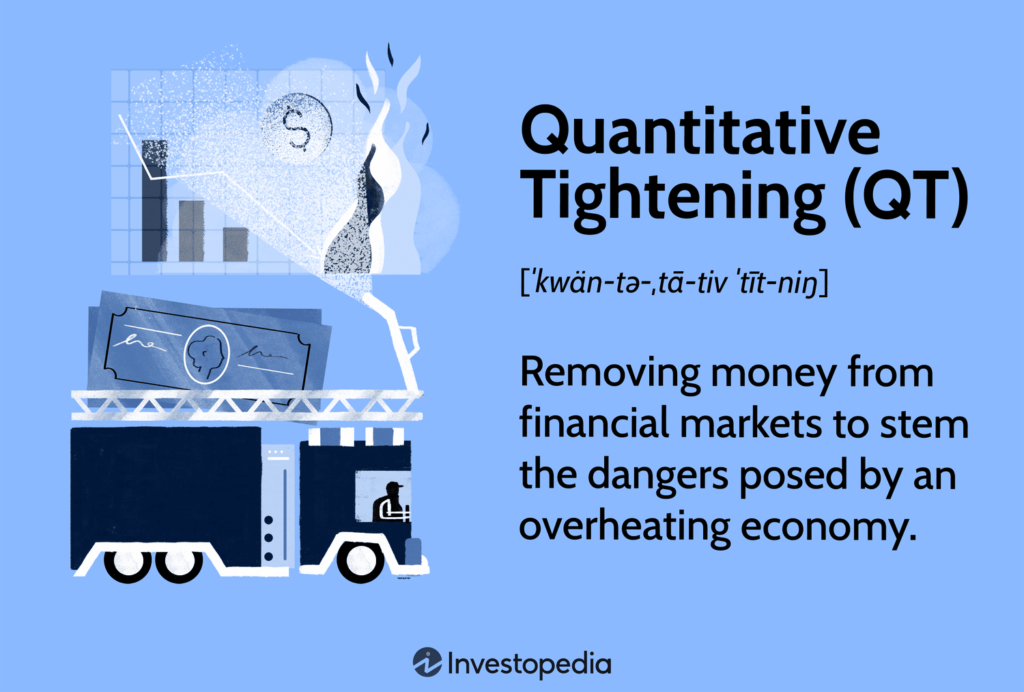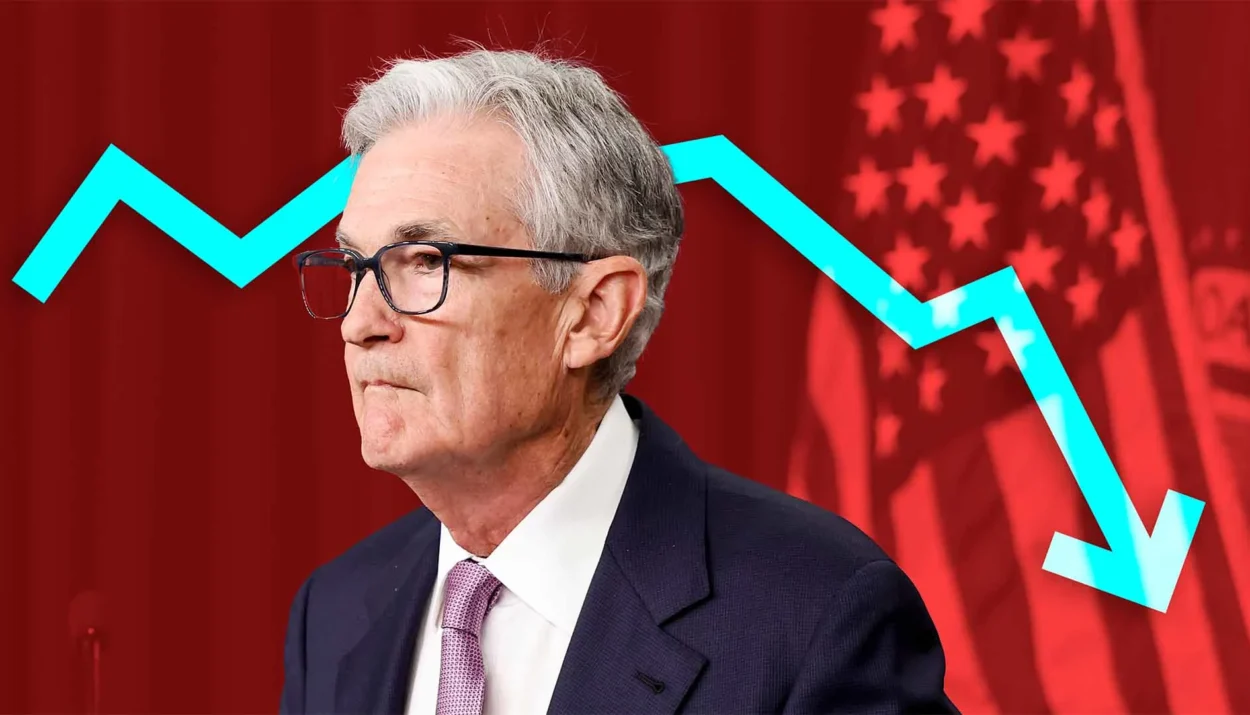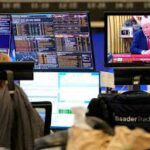The Fed cut rates by 25 bps and said QT ends Dec. 1, but Powell warned a December cut is “far from” guaranteed, jolting stocks and crypto before both stabilised. Here’s what happened, why it happened, and what to watch next.
Powell’s Message: Relief Today, Uncertainty Ahead
The Federal Reserve on Wednesday lowered its benchmark rate by 25 basis points, bringing the federal funds range to 3.75%–4.00%, in a move aimed at supporting a cooling labor market. At the same time, Powell revealed that quantitative tightening (QT)—the process of shrinking the Fed’s balance sheet—will end on December 1, with the central bank shifting to reinvest maturing Treasury securities instead of allowing them to run off.
Markets initially cheered both developments, expecting a clear path toward continued easing. But Powell’s remarks during his press conference quickly changed the tone.
“A further reduction in the policy rate at the December meeting is not a foregone conclusion — far from it,” Powell said.
“We have strongly differing views within the Committee about how to proceed.”
His message was unmistakable: the Fed isn’t committing to more cuts, and the next move depends entirely on incoming data — much of which is currently missing due to the ongoing government shutdown.
Divided Fed, Divided Outlook
Powell acknowledged an unusually deep split inside the Federal Open Market Committee. The decision to cut rates passed 10–2, with Governor Stephen Miran favoring a larger 50 bps cut and Kansas City Fed President Jeffrey Schmid voting against any cut at all.
This division, Powell implied, mirrors the broader uncertainty within the economy itself. Inflation has slowed but remains sticky near 3%, while job growth continues to cool. The Fed’s dual mandate—price stability and maximum employment—is now pulling in opposite directions.
“Policy is still modestly restrictive,” Powell explained.
“Today’s cut reflects our increased attention to employment risks, but inflation pressures have not fully faded.”
The message: The Fed wants flexibility, not promises. A December pause is now firmly on the table.
| Quote | Meaning |
|---|---|
| “A further reduction in the policy rate at the December meeting is not a foregone conclusion. Far from it.” | He’s saying: while we cut now, we’re not committing to a December cut. Markets expecting automatic cuts may need to adjust. |
| “What do you do if you’re driving in the fog? You slow down.” | Because data is weak or delayed (due to the government shutdown), the Fed will act more cautiously — “slowing down” policy, not accelerating it. |
| “By many measures … equity prices are fairly highly valued.” | Powell acknowledges that stocks (and perhaps other assets) are expensive. It signals the Fed is aware of risks in valuations and may not provide big tailwinds. |
| “Our policy is not on a preset course.” | The Fed is telling markets: we are flexible, not locked into previous assumptions of many cuts. |
| “Reserves will keep declining … there’s not a lot of benefit to more balance‑sheet runoff.” | The Fed will stop or reverse quantitative tightening (QT) soon; they’ll maintain higher reserves to support financial‑system stability. |
| “This is *different from the dot‑com era … there was a clear bubble back then … companies now have earnings, it’s really a different thing.” | Powell argues that the current tech/AI boom is not like the late‑1990s bubble: today’s companies have earnings, fundamentals — so risk of irrational bubble is less (though he still sees caution). |
Why Markets Dropped—Then Bounced Back
The reaction was immediate. Bitcoin fell below $110,000, while the Dow Jones Industrial Average shed nearly 200 points minutes after Powell’s warning. Stocks and crypto both sold off as traders rushed to reprice the odds of another rate cut this year.
But as the full context of Powell’s remarks became clear, markets began to stabilize. Ending QT was seen as liquidity-positive, signaling that the Fed aims to keep money markets functioning smoothly. That reassurance, coupled with still-healthy corporate earnings and solid ETF inflows, helped Bitcoin and equities pare back losses by the session’s close.
Analysts called it a classic “hawkish cut”—a move that eases policy today while hinting at restraint tomorrow.
Why Powell Struck a Cautious Tone
The Fed’s caution stems from two key challenges: missing data and rising political pressure.
Because of the federal government shutdown, the central bank is operating with only partial visibility into inflation, retail spending, and job creation. Powell compared the situation to “driving in the fog,” adding that when data is limited, “you slow down.”
At the same time, Powell faces vocal criticism from President Donald Trump, who has publicly demanded steeper and faster cuts. By signaling patience, Powell appeared determined to show that the Fed remains independent despite political noise.
The End of QT: What It Really Means
Ending QT is one of the most consequential policy shifts since the post-pandemic tightening began. The Fed’s balance sheet—once swollen to over $9 trillion—has already shrunk by $2 trillion since 2022.

Starting December 1, the central bank will:
- Stop reducing its Treasury holdings and begin rolling them over at maturity.
- Reinvest mortgage-backed-security (MBS) proceeds into Treasury bills to maintain liquidity.
This move doesn’t mean the Fed is stimulating the economy again. It’s a defensive step to prevent short-term funding stress, after repo-facility usage hit record highs earlier this week.
In short: QT’s end isn’t a green light for risk, but it’s a sign the Fed is worried about liquidity more than inflation right now.
What Comes Next
Heading into December, the Fed’s next steps will hinge on how the economy behaves over the next six weeks. Powell outlined what he’s watching:
- Labor data: “Low jobless claims suggest only gradual labor cooling,” he noted.
- Inflation trend: “Non-housing services inflation has been moving sideways … housing inflation is coming down.”
- Tariffs: “Our base case is short-lived tariff inflation, but the risk of persistence must be managed.”
- AI and growth: Powell downplayed the idea of an “AI bubble,” saying current investment “isn’t especially interest-sensitive,” and that consumer spending remains strong.
He added that the Fed expects the US economy to grow around 1.6% in 2025, slower than last year but still positive.
Investor Takeaway: Position, Don’t Predict
For traders and investors, the message is clear: don’t assume the easing cycle continues on autopilot.
If inflation cools further and hiring slows, the Fed may cut again in December. If not, it will likely pause to reassess. Either way, Powell’s stance shows the Fed is prioritizing stability and flexibility over speed.
The short-term market whipsaw—Bitcoin plunging then recovering, yields rising then easing—reflects that uncertainty. But the long-term direction still points toward gradual policy normalization, not a reversal.
As one trader put it: “Powell didn’t kill the rally — he just reminded everyone that the Fed doesn’t do guarantees.”
Powell’s October 29 press conference delivered both reassurance and restraint.
The Fed eased again, promised to end QT, and admitted deep internal divisions.
But its leader’s words—“not a foregone conclusion”—were enough to remind markets that the Fed’s path is guided by data, not desire.
Until that data arrives, investors should expect one thing above all: volatility.
Disclosure: This article does not represent investment advice. The content and materials featured on this page are for educational purposes only.










